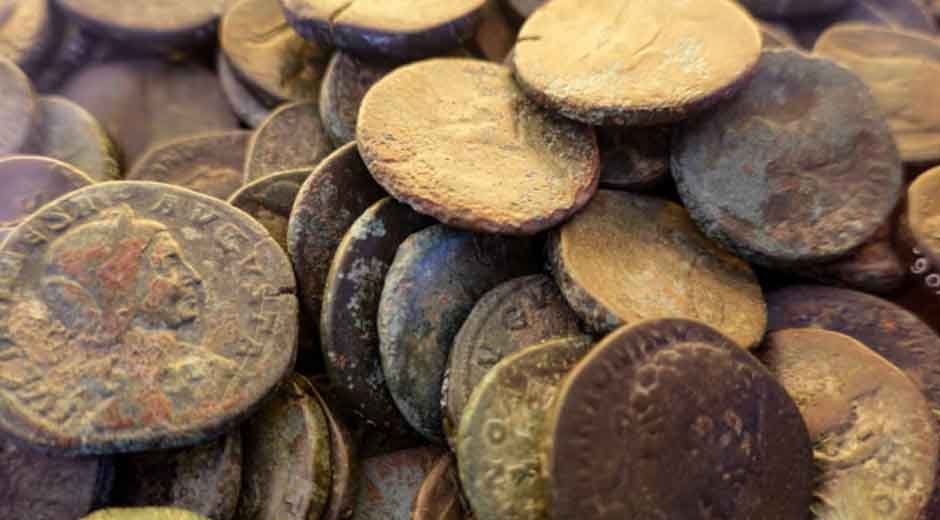Want to know if that old coin is worth a fortune?
The rare coin world is packed with treasures that can make collectors rich. But here’s the problem…
Most people get completely fooled by fakes.
The counterfeit coin market is out of control. 87% of reported scams involve fraudulent platforms and fake artifacts. The numismatic market has become dangerous.
But here’s the good news…
With the right techniques, anyone can spot fakes and build a valuable collection that lasts.
What you’ll learn:
- Why Authentication Matters More Than Ever
- The Most Common Counterfeiting Methods
- Professional Authentication Services
- Essential Preservation Techniques
- Storage Solutions That Actually Work
- Red Flags Every Collector Should Know
Why Authentication Matters More Than Ever
Here’s what’s happening in the rare coin market…
Chinese counterfeiters have completely changed everything. What used to be a few obvious fakes has turned into a massive flood of perfect replicas.
The situation is this bad:
Every week, NGC and PCGS receive hundreds of counterfeit submissions. The 1909-S VDB Lincoln cent is now the most counterfeited coin in the world.
These aren’t crude basement operations anymore.
Modern counterfeiters create perfect replicas with correct weights, proper dimensions, and artificial aging that looks completely authentic. Some fakes are so good they’re sold in counterfeit PCGS and NGC holders.
Here’s the scary part…
Counterfeit coin detection market growth is expected to hit 5.6% CAGR through 2031. The problem is getting worse, not better.
The most valuable coins get targeted first. Think 1799 Bust Dollars, 1804 Bust Dollars, and Trade Dollars. These have been heavily counterfeited for decades.
Collections of rare coins and artifacts, including unique pieces like shipwreck coin jewelry, are especially vulnerable to these sophisticated counterfeiting operations.
But it’s not just the expensive stuff…
Common coins get altered to look like key dates. Adding a simple “S” mintmark can turn a $5 coin into a $500 coin. That’s why authentication isn’t optional anymore.
The Most Common Counterfeiting Methods
Understanding how fakes are made is the best way to spot them.
Cast Counterfeits
These are easy to catch if you know what to look for.
Counterfeiters make a mold from a real coin and pour metal into it. The results have seams around edges, grainy surfaces, and incorrect weights.
Drop a cast fake and it sounds dull. Real coins ring when dropped.
Transfer Die Counterfeits
These are much more dangerous.
A genuine coin creates a die that strikes multiple fakes. Every counterfeit has identical surface marks from the original coin. Professional graders look for these repeating “depressions” to identify them.
Altered Coins
This is where things get tricky…
Common coins get modified to look rare. Added mintmarks, removed mintmarks, date changes, tooling marks. All designed to fool collectors.
And here’s the kicker…
Technology keeps improving. Some counterfeiters use computer-aided design and precision manufacturing. These fakes need professional equipment to detect.
Professional Authentication Services
- When dealing with valuable coins, professional authentication is essential.
- The top services are:
- NGC (Numismatic Guaranty Company)
- PCGS (Professional Coin Grading Service)
- ANACS (American Numismatic Association Certification Service)
- These services use X-ray fluorescence spectroscopy to analyze metal composition. They maintain massive databases of known counterfeits and employ expert graders.
- Here’s what they examine:
- Weight and dimensions
- Metal composition
- Die characteristics
- Surface qualities
Strike characteristics
But here’s something most collectors don’t realize…
Even certified coins can be counterfeited. Chinese operations now produce fake NGC and PCGS holders that look nearly identical to authentic ones. Always buy from dealers who guarantee authenticity.
Essential Preservation Techniques
- Proper preservation is just as important as authentication.
- Environmental Control
- Coins face constant attack from their environment. Humidity, temperature changes, and air pollutants destroy even valuable pieces.
- Here’s what’s needed:
- Stable temperature (around 70°F)
- Low humidity (30-50%)
- Clean air filtration
- Light protection
- Handling Rules
- Most damage happens during handling. Follow these rules religiously:
- Always wear cotton gloves
- Hold coins by edges only
- Work over soft surfaces
- Never touch coin surfaces
- Value-Killing Mistakes
- These mistakes will destroy coin values:
- Cleaning coins (reduces value by 50% or more)
- Using PVC plastic holders
- Damp storage environments
- Direct sunlight exposure
Storage Solutions That Actually Work
- The right storage system makes or breaks a collection.
- Materials to Avoid:
- PVC plastic (releases hydrochloric acid)
- Sulfur-containing cardboard
- Newspaper or paper towels
- Adhesive materials
- Storage Options That Work:
- Coin SlabsProfessional services use sealed plastic holders for maximum protection. They’re expensive but essential for valuable coins.
- Mylar FlipsMade from stable plastic that doesn’t break down. Perfect for organization and temporary storage.
- Coin AlbumsGreat for type sets and series. Choose albums with chemically neutral materials only.
- Storage Locations
- Bank safety deposit boxes (best security)
- Home safes (with proper insurance)
- Climate-controlled storage
- Fireproof containers
Red Flags Every Collector Should Know
- Learning these warning signs saves thousands of dollars.
- Pricing Red Flags:
- Prices too good to be true
- No return policies
- No-reserve auctions on expensive coins
- No provenance provided
- Physical Red Flags:
- Coins that feel wrong
- Unusual surface textures
- Incorrect fonts or lettering
- Visible tooling marks
- Artificial toning
- Seller Red Flags:
- No detailed photos
- Pressure buying tactics
- No established reputation
- Unknown selling locations
“Estate find” claims
The numismatic market offers incredible opportunities, but it’s full of traps for unwary collectors.
Bringing It All Together
- Authentication and preservation protect more than money. They preserve history.
- The counterfeiting problem is real and growing. 3.04% of all UK £1 coins in circulation were counterfeit before replacement with new designs. That’s millions of fake coins.
- But here’s the thing…
- Proper knowledge and techniques build collections that are appreciated for decades.
- Here’s the action plan:
- Learn common counterfeits in collecting areas
- Invest in proper storage materials
- Work with reputable dealers only
- Get valuable coins professionally authenticated
Keep detailed collection records
The rare coin market will always have challenges. But collectors who take authentication and preservation seriously profit the most.
Remember this…
A $1,000 coin becomes worth $100 with one scratch. But properly authenticated and preserved coins appreciate for generations.










